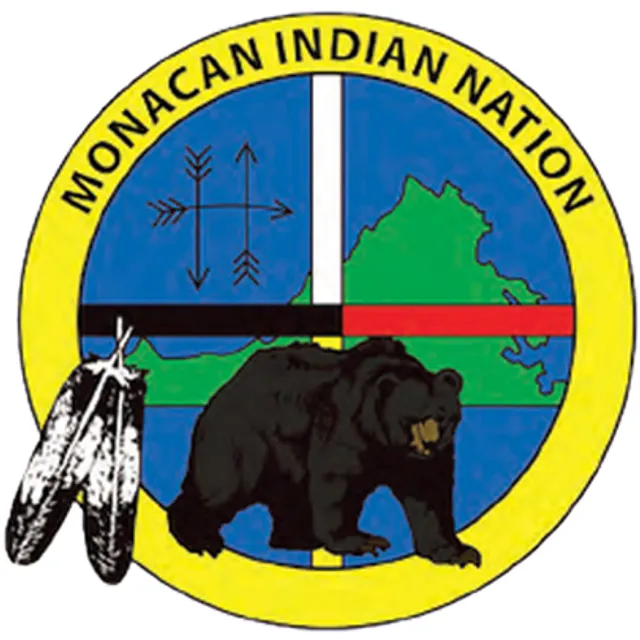
The Monacan Indian Nation
The Monacan Indian Nation is located in the Piedmont region of Virginia, adjacent to the Blue Ridge Mountain, headquartered in what is now Amherst County. This area has been occupied for more than 10,000 years. Along with other Siouan speaking tribes such as the Saponi, Tutelo, and Mannahoac, the Monacan once occupied most of the western half of what is now Virginia.
Monacans were traditionally a mound-building culture. They hunted deer, fished the rivers of the territory, and they had been farming corn for more than 900 years. They were also known to mine copper, and they became proficient traders with other Indian tribes, trading copper, which was highly valued, for items such as shell beads.
Monacans were also highly skilled basketmakers who created a unique form of basket weaving that incorporated animals and flower designs into the weaves. The potters employed the coil method to create wares of exceptional beauty and durability. Their skills are still practiced among Monacan artisans, along with contemporary arts.
The first known encounter between Monacans and Europeans occurred in 1608, when Captain John Smith and his men engaged in hostilities with the Monacans. The Europeans captured a wounded man named Amorolek. When John Smith asked Amorolek why his people had been hostile toward the English, he replied, “We heard that you were a people come from the underworld, to take our world from us.” His prophetic statement stands as an accurate description of the Monacan experience.
Because the Monacan were enemies of the Powhatan and chose not to interact with colonists, early Europeans wrote little about them.
Around 1750, when the city of Lynchburg was founded, Monacan people lived in two traditional communities along the James River. They established the post town of Oronoco about 1800, where they raised tobacco for market and grew other crops. Soon after, William Johns purchased 500 acres on Bear Mountain and established an Indian farming settlement. By the end of the century, more than 250- Monacan descendents lived in the area.
The Episcopal Church established a mission at Bear Mountain in 1907. At the time, most Monacan families worked in nearby orchards, picking fruit and cutting pulp wood. Children attended the one-room school at the mission; high school was not available. By the end of the 1950s, nearly half of the Monacan community had left the state due to its repressive racial policies.
In Amherst, public schools began accepting Monacan students in 1963, nine years after the Supreme Court mandated integration. During the next two decades, Monacan people began to assert their rights. The tribe received official recognition from the state of Virginia in 1989, 381 years after the first encounter between their people and the European colonists.
Today, 2,000 members of the Monacan Nation are self-governed by a chief, assistant chief, and tribal council elected by tribal members. The tribe is focused on revitalizing its cultural traditions and language. To preserve this heritage, the tribe developed its own Ancestral Museum with artifacts and exhibits. The museum and Episcopal mission church of St. Paul’s are located near Bear Mountain, the spiritual center of the Monacan people. The restored log-cabin schoolhouse, circa 1870, is a National Historic Landmark.
The tribe operates a food bank, elder program, youth cultural program and other projects that benefit tribal members. An Annual Powwow is held in May and a Homecoming Festival in October. Both events are open to the public.